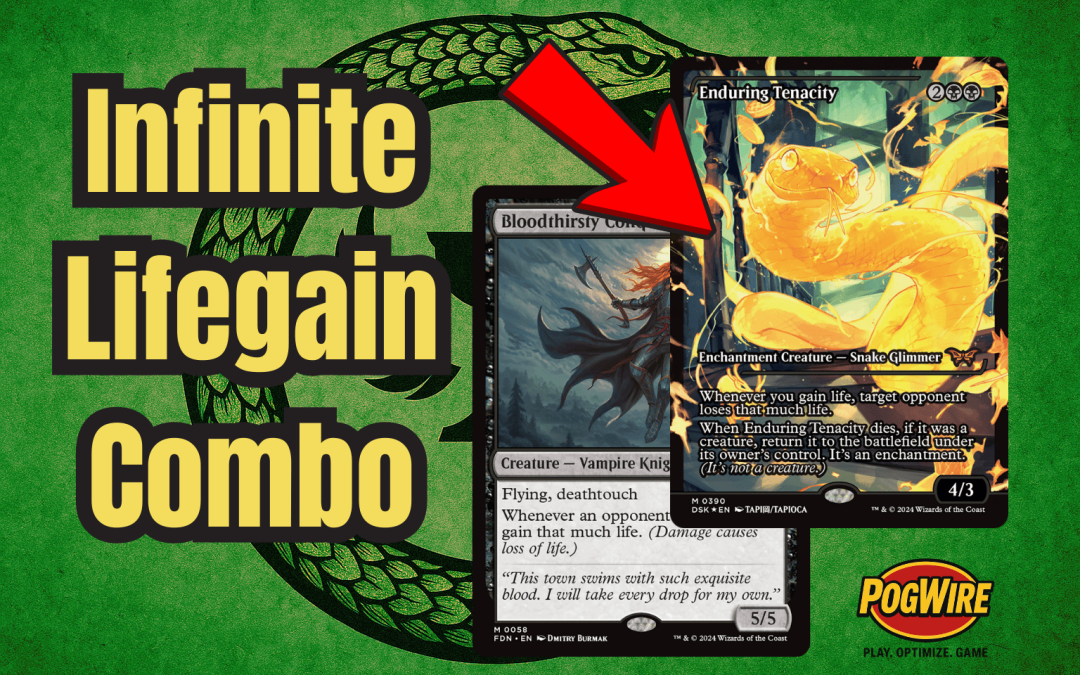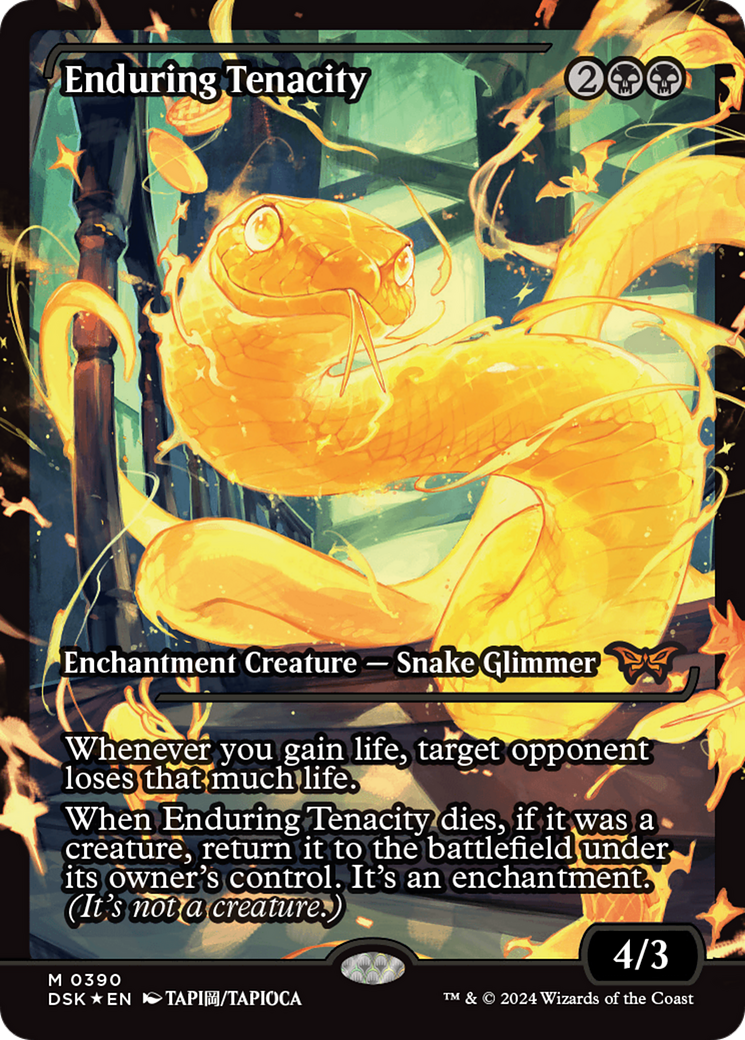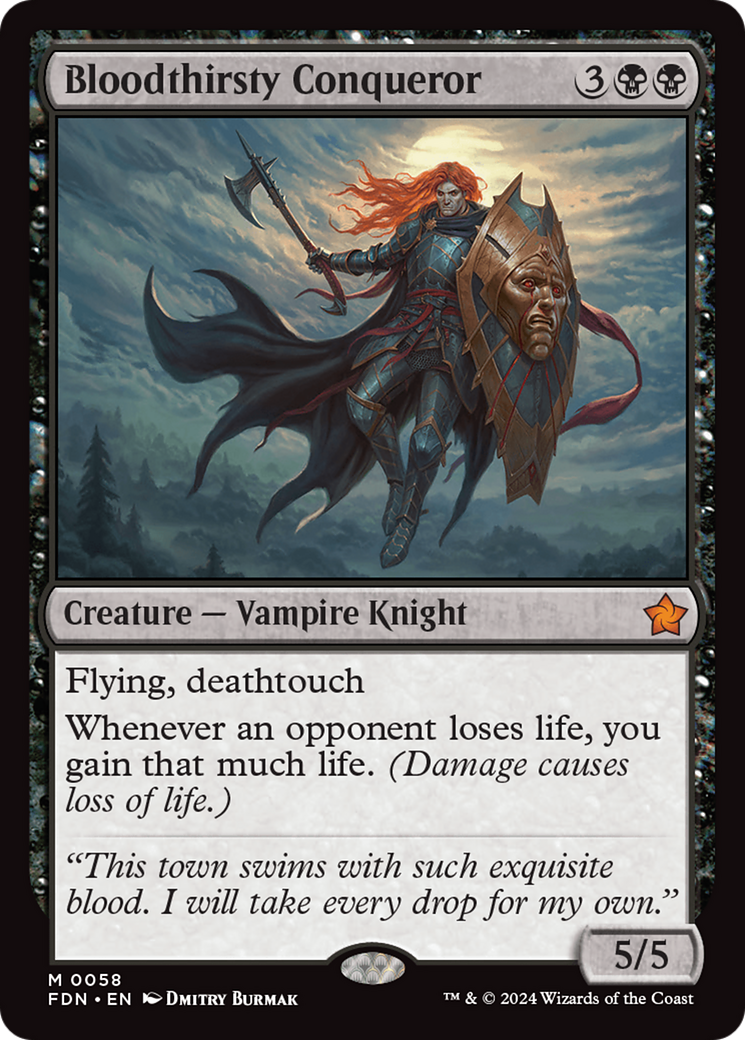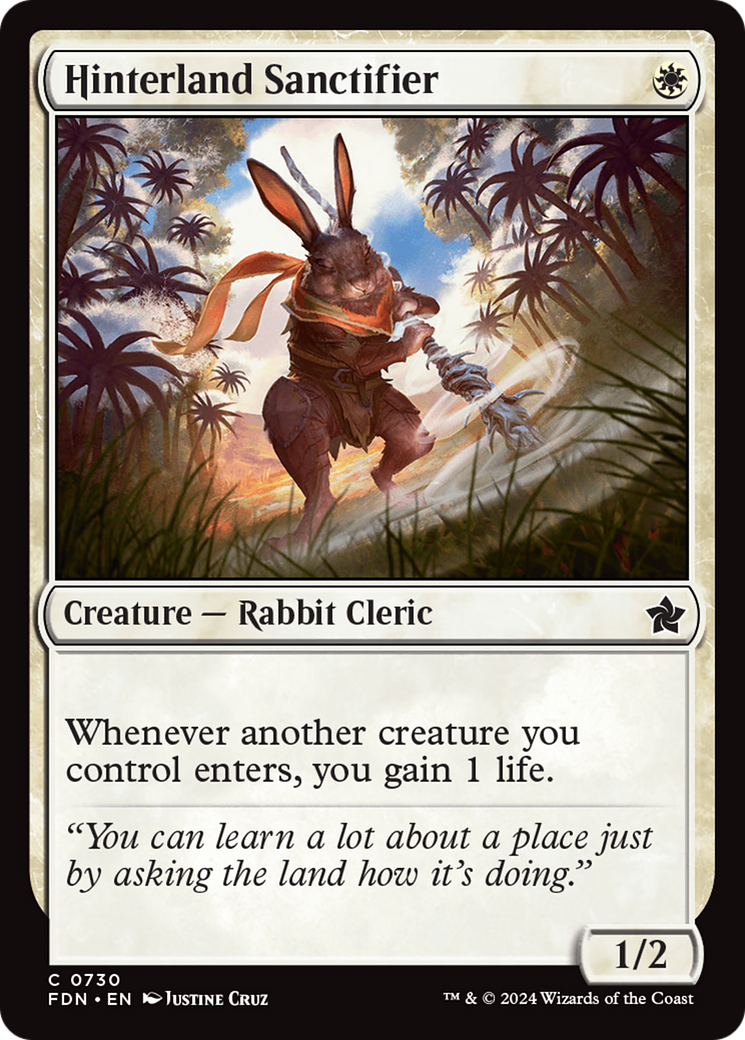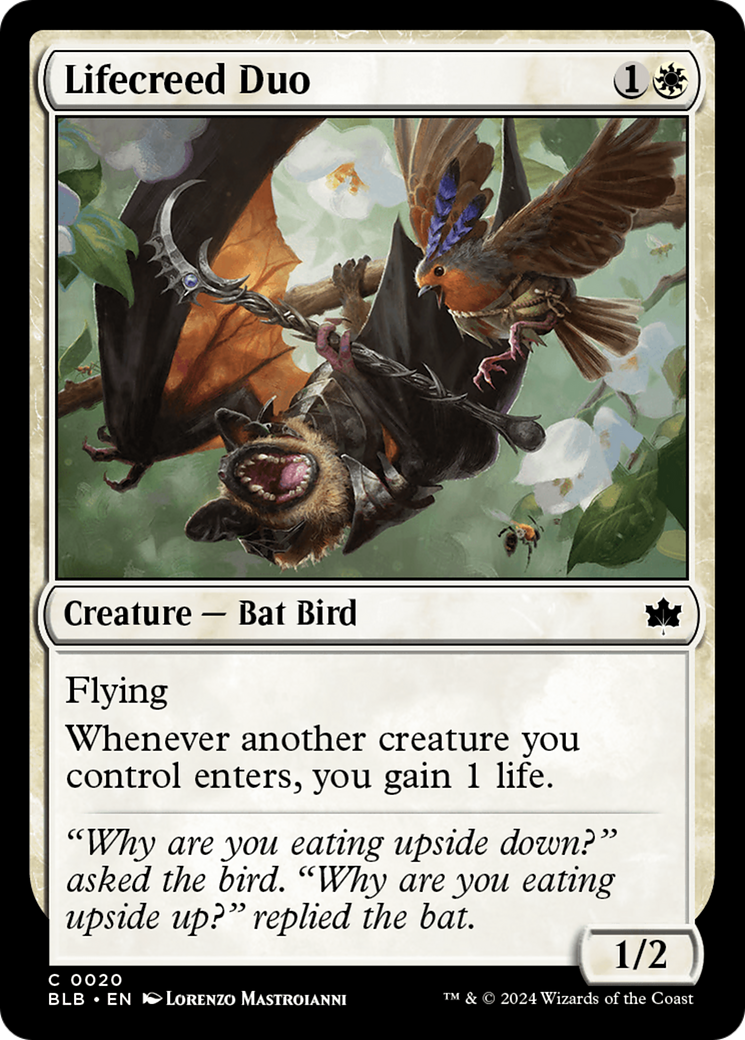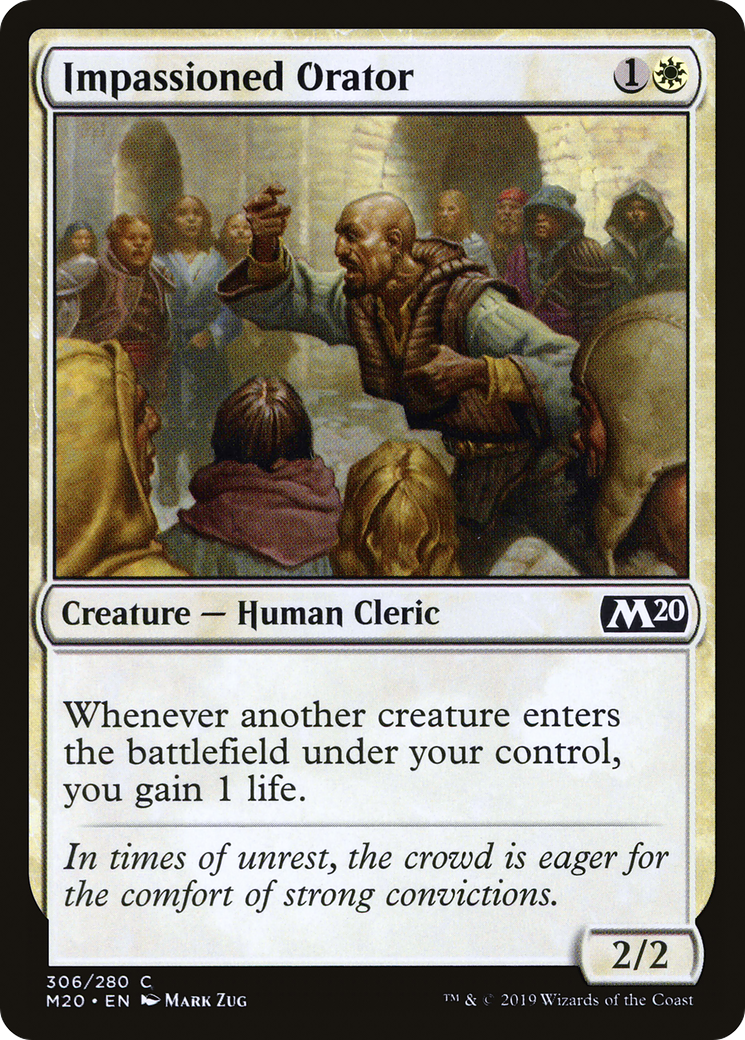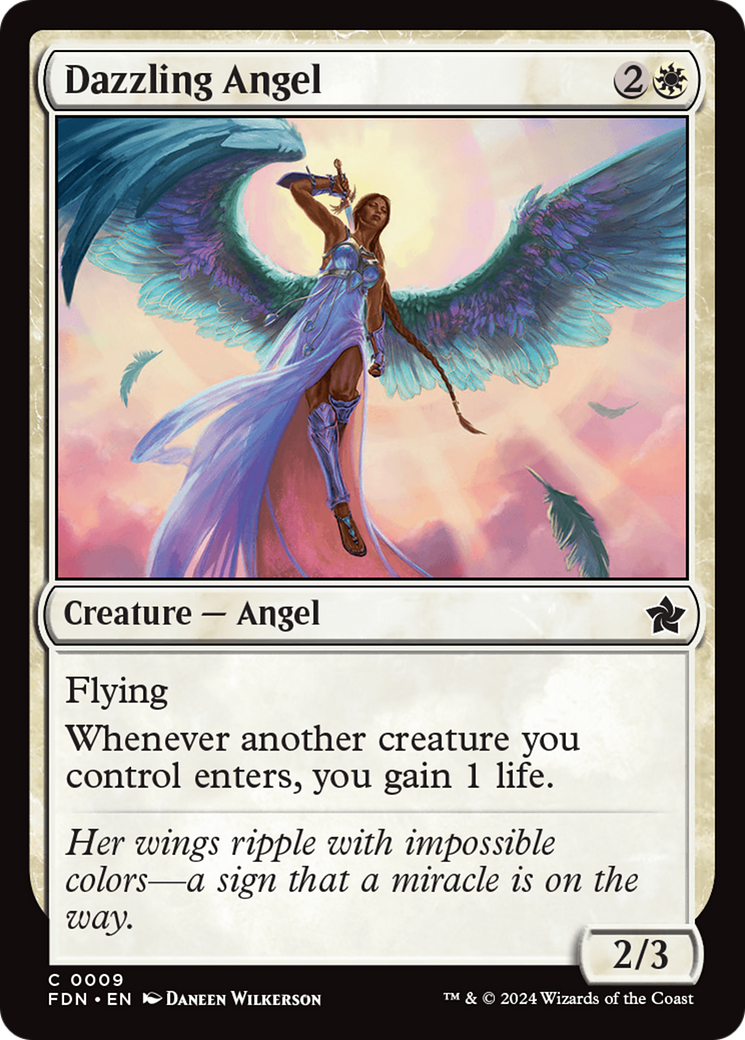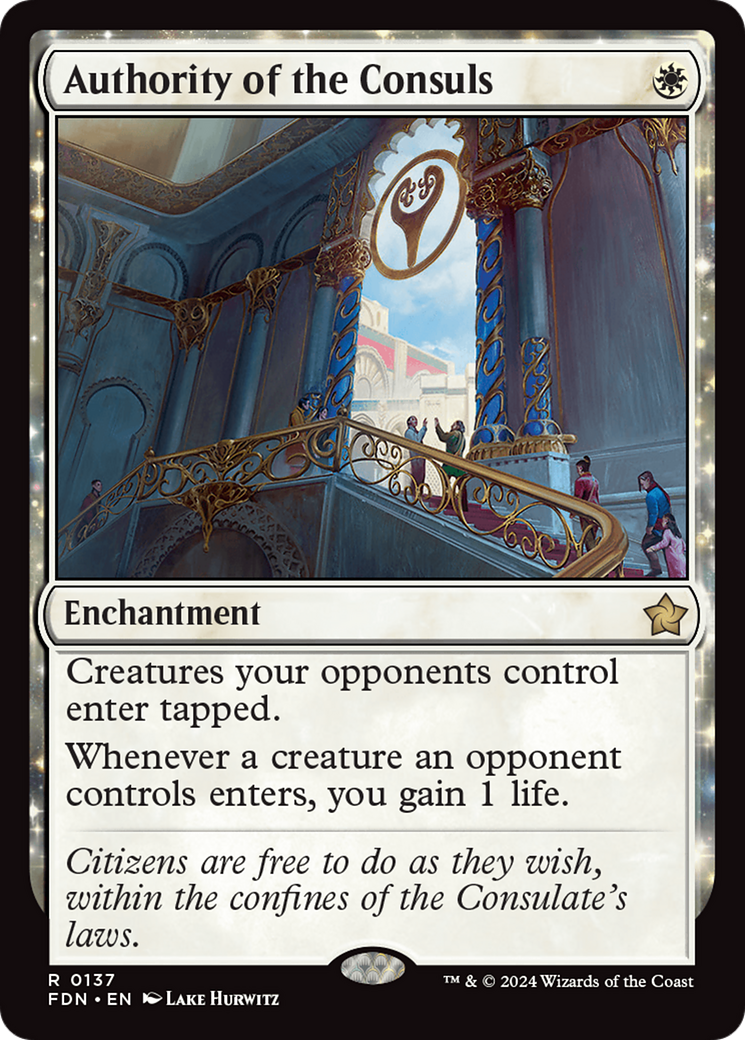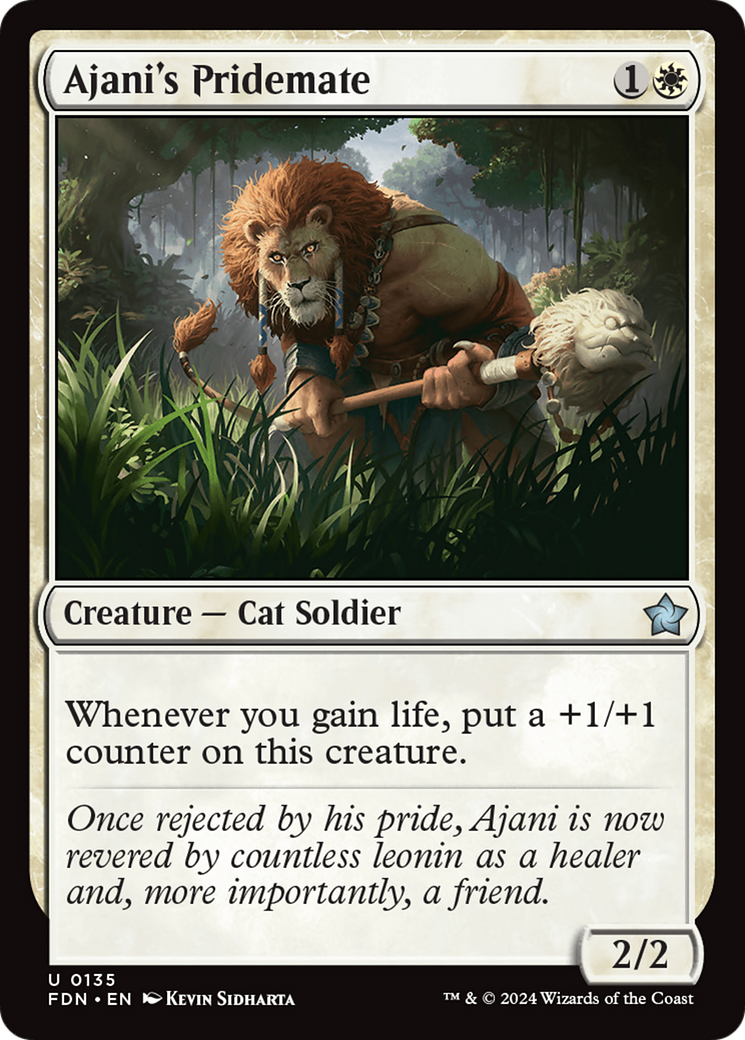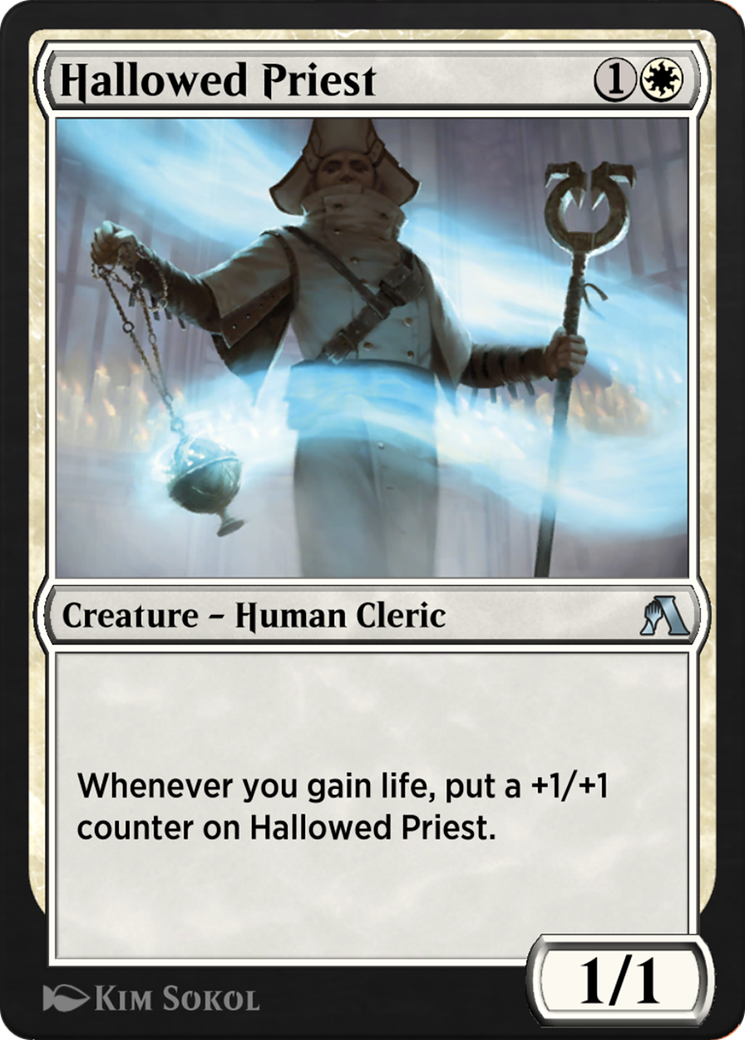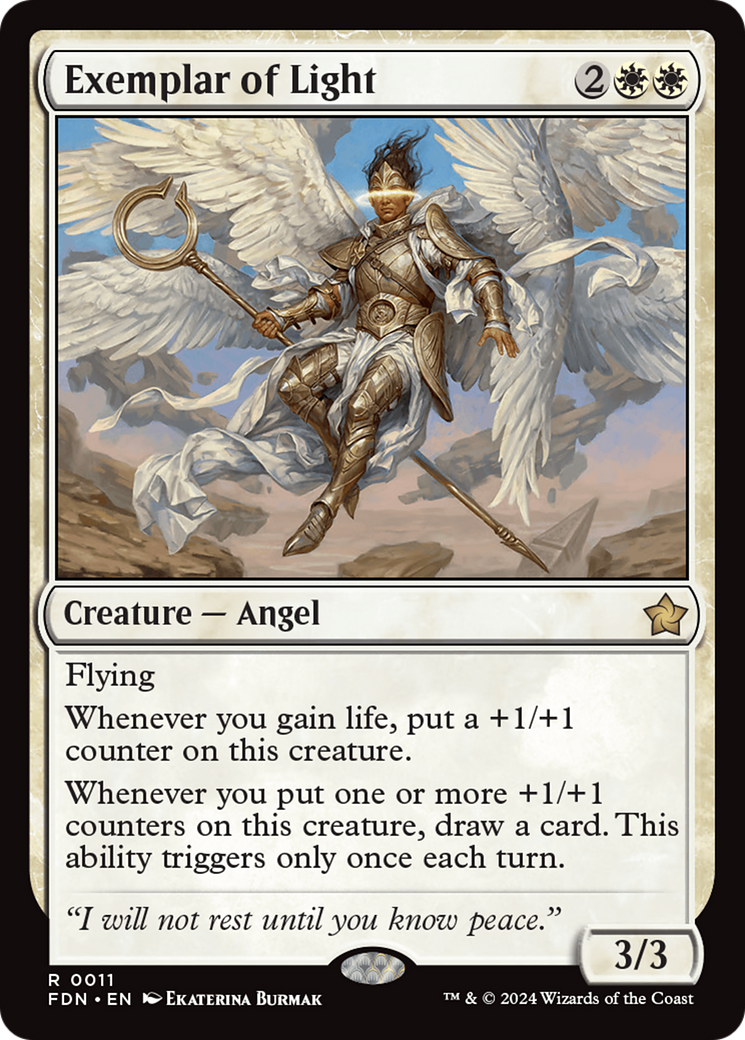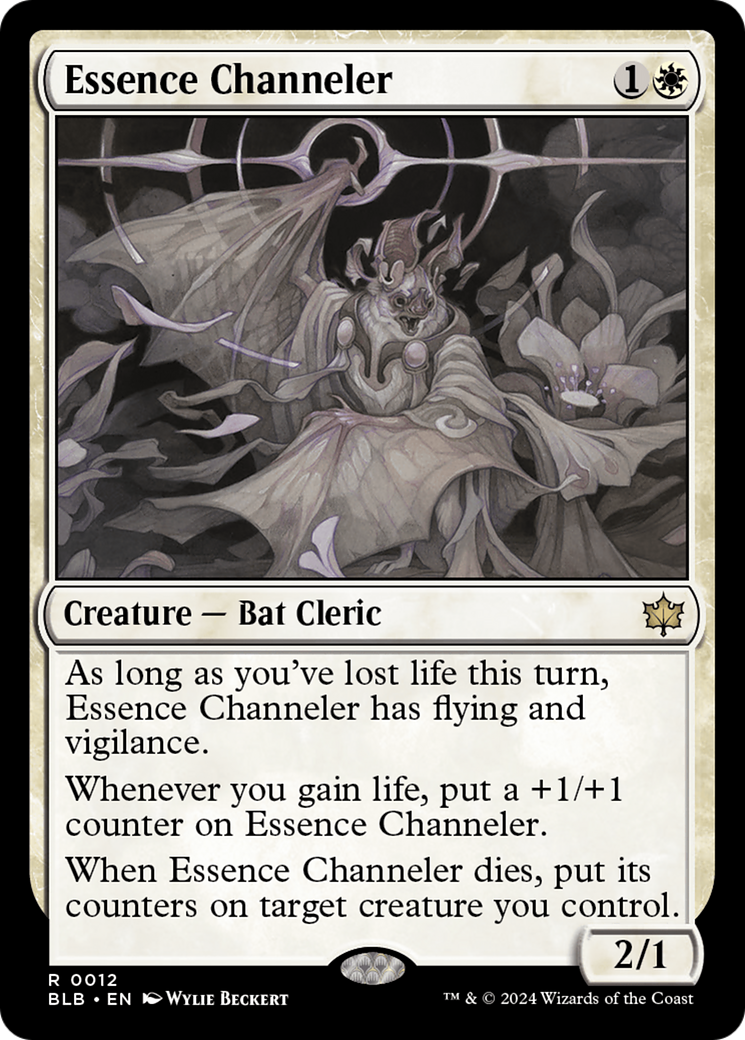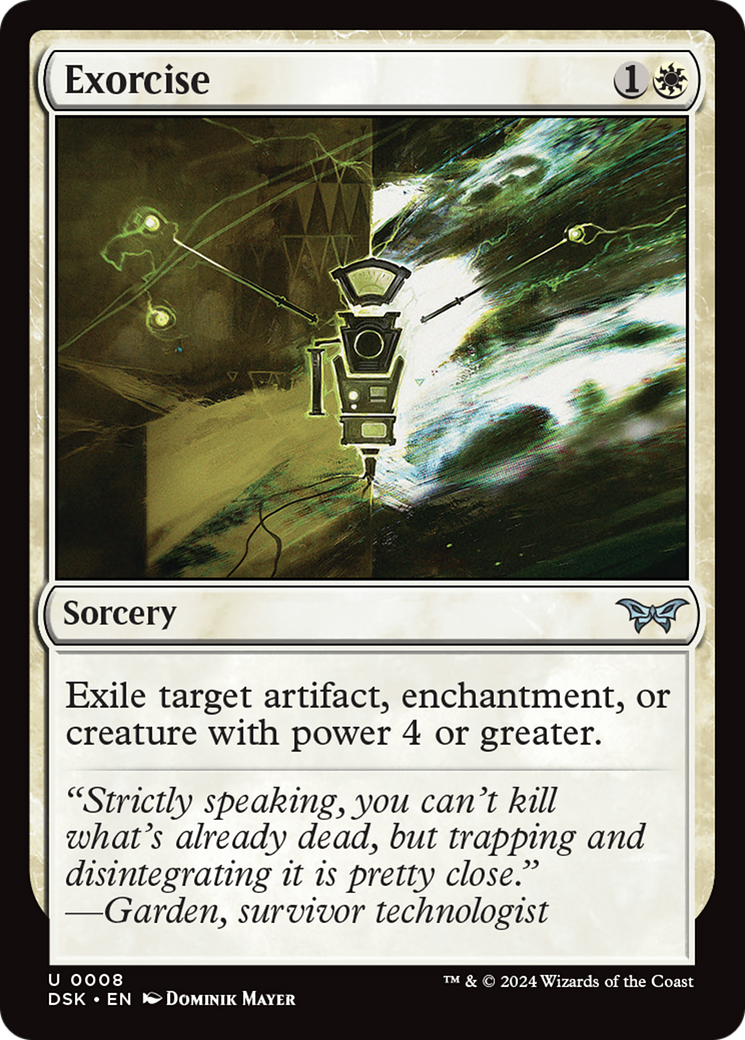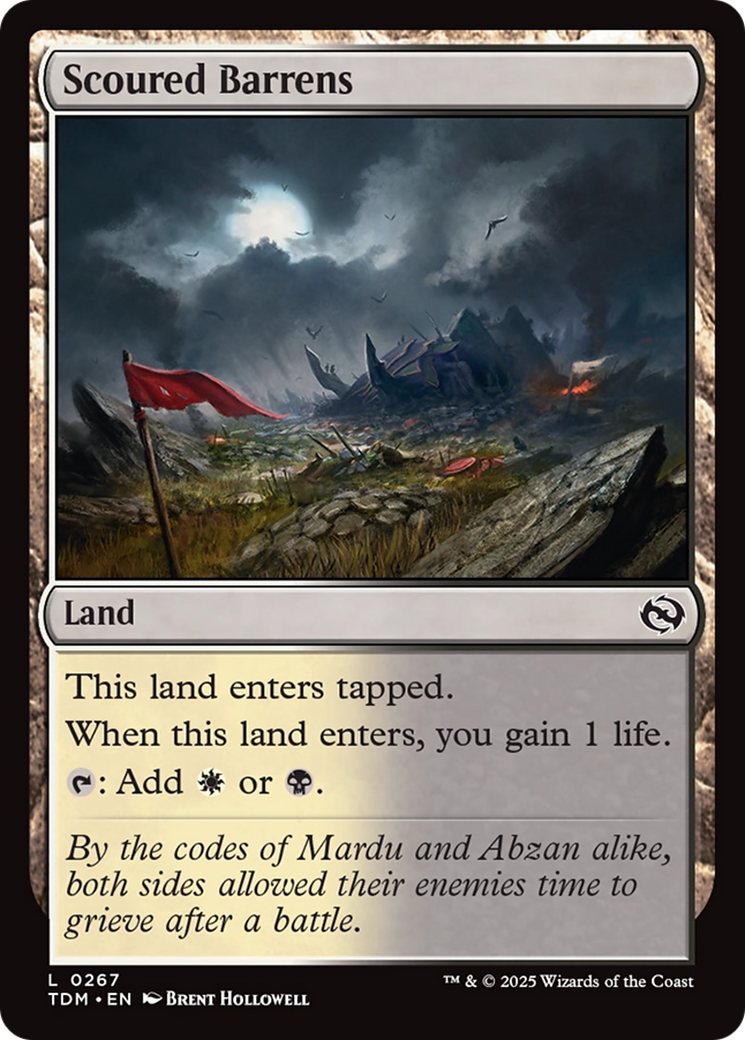Alchemy – Off-Meta Combo
Gain infinite life, drain infinite life – a deadly circle of life and death.
When every point of life gained can spiral into a lethal barrage, you know you’re in for a wild ride. This Orzhov Lifegain Combo deck – which we’ve dubbed “Orzhov Ouroboros” – brings a historic infinite combo to MTG Arena’s Alchemy format. By pairing Bloodthirsty Conqueror (a vampiric 5/5 flyer with Exquisite Blood’s power) with Enduring Tenacity (a resilient Sanguine Bond on a stick), we can drain opponents from 20 to 0 in an instant. Surround that combo with a classic lifegain “Soul Sisters” package – think Ajani’s Pridemate and friends – and you have a deck that both outlasts aggro with massive life totals and threatens a one-turn kill out of nowhere. It’s witty, it’s wild, and it’s absolutely lethal when piloted correctly.
Are you an Arena grinder looking for a powerful off-meta ladder deck? Do you enjoy watching your life total soar while your opponent’s evaporates? If so, strap in! This deck tech will break down the Orzhov Ouroboros combo deck in detail – explaining the combo, core strategy, card choices, play patterns, matchups, and sideboard plans. By the end, you’ll see why this PogWire brew has the community abuzz and opponents on high alert. Let’s dive into the list:
Deck List
Upload to Arena - Copy to Clipboard then Import
Deck
2 Hallowed Priest (ANB) 9
4 Ajani’s Pridemate (FDN) 135
4 Impassioned Orator (ANB) 10
4 Dazzling Angel (FDN) 9
2 Delney, Streetwise Lookout (MKM) 12
3 Lifecreed Duo (BLB) 20
4 Hinterland Sanctifier (FDN) 730
4 Exemplar of Light (FDN) 11
4 Starscape Cleric (BLB) 116
1 Essence Channeler (BLB) 12
2 Bloodthirsty Conqueror (FDN) 58
2 Enduring Tenacity (DSK) 95
3 Authority of the Consuls (FDN) 137
3 Exorcise (DSK) 8
10 Plains (DSK) 277
6 Swamp (DSK) 281
2 Scoured Barrens (TDM) 267
Sideboard
4 Duress (DMU) 89
3 Cut Down (DMU) 89
2 Go for the Throat (BRO) 102
2 The End (WOE) 99
2 Soul-Guide Lantern (THB) 237
2 Fragment Reality (MOM) 15
Core Strategy: Lifegain Synergy Meets Infinite Combo
Orzhov Ouroboros is built on two complementary pillars: a lifegain beatdown engine and a game-ending infinite combo. The plan is to flood the board with creatures that gain life or benefit from life gain, dominate the early and mid-game by growing those creatures and accumulating value, and then finish the game either by overwhelming combat damage or by firing off the infinite lifegain/lifeloss combo once the pieces fall into place.
At its heart, this deck plays like a souped-up Orzhov Soul Sisters deck. Cards like Hinterland Sanctifier, Lifecreed Duo, Impassioned Orator, and Dazzling Angel are our lifegain engines – each gains us 1 life whenever another creature enters under our control (akin to classic Soul Warden effects). With multiple such effects in play, every creature we play (or even our opponent plays, in the case of Authority of the Consuls) can trigger several life gain events, supercharging our life total and triggering numerous payoffs. Those payoffs are the likes of Ajani’s Pridemate and Hallowed Priest (which grow bigger with each life gain), Exemplar of Light (which grows and draws cards on life gain), and Starscape Cleric (which drains the opponent 1 life whenever we gain life). The result is a synergistic engine: every small creature or token we play heals us, buffs our army, and pings the opponent, creating an overwhelming snowball of value and board presence.
The combo finish elevates this strategy from a solid lifegain deck to a terrifying OTK machine. The pieces, Bloodthirsty Conqueror and Enduring Tenacity, create a feedback loop when combined:
Enduring Tenacity – a 4-mana Enchantment Creature (Snake Glimmer) – says “Whenever you gain life, target opponent loses that much life.” This mirrors the effect of Sanguine Bond or Vito, turning our life gains into enemy life loss. Tenacity itself is a 4/3 creature, but importantly, it has built-in resiliency: if it dies, it returns to the battlefield as an enchantment (no longer a creature). That means it often takes two removal spells to fully rid the board of its effect! On its own, Enduring Tenacity makes all our little life gain triggers chip away at the opponent’s life total – effectively giving the deck reach even if the board stalls.
Bloodthirsty Conqueror – a 5-mana legendary Vampire – is essentially Exquisite Blood on legs. It’s a 5/5 flying deathtoucher that says “Whenever an opponent loses life, you gain that much life.” In other words, whenever we deal damage or drain an opponent, we heal that much. The Conqueror is a formidable threat by itself: a 5/5 evasive body that also gains you life whenever it connects (or whenever any life loss happens to the opponent) can swing races dramatically. If an opponent takes 5 from this Vampire’s attack, you’ll gain 5 life right back – a massive swing that can put the game out of reach. Even outside of the infinite combo, Bloodthirsty Conqueror provides huge life swings and synergizes with our drain effects (like Starscape Cleric) to pad our life total to absurd heights.
Together, these two cards form an infinite “drain loop.” Once any instance of life gain or life loss occurs with both in play, they will continuously trigger each other in an endless cycle:
-
Say you gain 1 life (from any source) with both pieces on board. Enduring Tenacity triggers, causing the opponent to lose 1 life.
-
The opponent losing life then causes Bloodthirsty Conqueror to trigger, making you gain 1 life.
-
This life gain, in turn, triggers Tenacity again – opponent loses 1 life, which triggers Conqueror… and so on ad infinitum.
There’s no “may” in these effects – it will repeat until someone is dead. In a 1v1 game, the opponent will be drained to 0 life (and your life total will shoot to effectively infinity) once the loop starts. One point of life swing is all it takes to deal lethal. It doesn’t matter if the opponent is at 20 life or 200 – the combo will drain them dry immediately. This is essentially the infamous Exquisite Blood + Sanguine Bond combo now made Standard-legal in Alchemy, and it wins on the spot if unimpeded.
Importantly, sparking the combo is easy in this deck because we have so many incidental life triggers. For example, if you have both combo pieces out, something as simple as playing a creature (triggering an Impassioned Orator or Hinterland Sanctifier for 1 life) will set off the infinite loop. Even an opponent’s action can start their demise: with Authority of the Consuls on board, if your opponent plays a creature, you gain 1 life (Authority trigger) – which can immediately ignite Tenacity + Conqueror into overdrive. In practice, once both pieces are in play, it’s nearly impossible for an opponent to avoid any life change occurring. And once it does, game over.
Combo Example: You have an Impassioned Orator in play (gains 1 life whenever another creature enters under your control) and Enduring Tenacity already on the battlefield. On turn 5, you tap out for Bloodthirsty Conqueror. As the Conqueror enters, Orator’s ability triggers – you gain 1 life. Enduring Tenacity triggers, making the opponent lose 1 life. That loss triggers the Conqueror – you gain 1 life. And just like that, the loop continues infinitely. The opponent’s life tumbles straight to 0 before they even get priority, and your life total shoots into the stratosphere. The Orzhov Ouroboros has devoured its prey!
This ability to threaten a one-turn kill from seemingly out of nowhere forces opponents to play very differently. As soon as they see one combo piece, they must respect the possibility of the other. Many games will end with a fairly straightforward beatdown, but the ever-present looming threat of the combo influences how opponents allocate removal and interact. We leverage that fear to our advantage. While they fret over the combo, our “fair” gameplan of lifegain and large creatures can take over, and vice versa – if they focus on the board, we might sneak in the combo kill.
In summary, the core of Orzhov Ouroboros is a lifegain engine fueling massive creature growth and incremental drains, backed up by a combo finish that instantly wins once assembled. Next, we’ll break down the specific card choices that make this strategy possible, and how each contributes to the deck’s overall gameplan.
Card-by-Card Breakdown: The Lifegain Legion
Let’s examine each component of the deck and the reasoning behind its inclusion. The deck can be thought of in a few functional groups: Lifegain Enablers, Lifegain Payoffs, Combo Pieces, and Support/Utility. Many cards overlap in roles (some both enable and payoff lifegain), but we’ll discuss them in context.
Lifegain Enablers – “Soul Sisters” Package
These cards are the engine of the deck, providing a steady stream of life gain triggers whenever creatures enter the battlefield. They ensure our Pridemates grow, our Clerics drain, and we stay out of burn range against aggro.
Hinterland Sanctifier – Creature – Rabbit Cleric (1/2, 1W): Our ideal turn-1 play. This adorable little Cleric is essentially a new-age Soul Warden, except it only cares about creatures you control. “Whenever another creature you control enters the battlefield, you gain 1 life.” At 1 mana, it’s an efficient way to start banking life early and often. By triggering on each of your creature entries, Sanctifier sets up all your payoffs to start working. Drop this on turn one, and your turn two plays will come with bonus life attached. While it doesn’t trigger on opponent’s creatures (making it slightly less broad than the classic Soul Warden), in our creature-heavy build it performs amazingly – every token or creature we play feeds the engine. Plus, as a 1/2 it can chump block small attackers in a pinch (sometimes surviving thanks to that 2 toughness).
Lifecreed Duo – Creature – Bat Bird (1/2, 1W): Functionally, this is Sanctifier #5-7 for us. Flying gives this two-drop some evasive utility (it can chip in for a point or two of damage or block a random flyer), but its main text is what matters: “Whenever another creature you control enters the battlefield, you gain 1 life.” Just like Sanctifier (and Impassioned Orator, coming up next), Lifecreed Duo ensures every creature spell doubles as a heal. The more of these effects you have in play, the more each creature “pays you back” in life. Having a Duo and a Sanctifier out means a single creature ETB yields 2 life, which in turn could be 2 +1/+1 counters on Ajani’s Pridemate and 2 drain triggers on Starscape Cleric! Lifecreed Duo being a flyer is handy – against decks with small flying threats or tokens, it can block, and unopposed it can peck in the air (those points add up, especially when you gain life and buff it). It’s also adorable flavor-wise (a bat and a bird working together on a creed of life)!
Impassioned Orator – Creature – Human Cleric (2/2, 1W): Another familiar lifegain “sister.” The Orator says “Whenever another creature enters the battlefield under your control, you gain 1 life.” – essentially identical to Lifecreed Duo’s text (minus the flying). At 2 mana for a 2/2, it’s a solid body that scales well into the game by continuously fueling our life-based synergies. Orator is particularly nice in multiples: two Orators mean each creature ETB gains us 2 life (two separate triggers). It’s not uncommon to have an Orator plus a Sanctifier out, then play a creature and gain 2 or 3 life from one ETB. That kind of life chunk can dramatically swing races and generates multiple triggers for our Pridemates and Clerics. Orator being a 2/2 means it can attack or trade in combat better than the 1/2 sisters, but generally you’ll keep it around to keep the lifegain engine humming. It’s worth noting that Orator’s effect stacks with all the above cards – you could potentially have Sanctifier, Duo, and Orator all in play, causing a single creature drop to net 3 life (and yes, that’s three separate life-gain events). Those interactions get even crazier with Delney, Streetwise Lookout (see below) doubling the triggers!
Dazzling Angel – Creature – Angel (2/3, 4W?): A flying Soul Sister in angelic form. Dazzling Angel’s text: “Flying. Whenever another creature you control enters the battlefield, you gain 1 life.” It’s essentially an Impassioned Orator effect on a 2/3 flying body. While 5 mana is a lot more than 2 for a similar effect, Dazzling Angel brings a couple of unique advantages. First, as a 2/3 flyer, it’s a legitimate mid-game threat/blocker – it can pressure planeswalkers or opponent life totals from the air and block pesky flyers (like opposing angels or dragons) thanks to that 3 toughness. Second, being a creature with this ability means it itself will trigger our other lifegain engines when it enters. For example, casting Dazzling Angel will trigger Orator, Sanctifier, etc., giving us immediate life even before the Angel’s own ability starts contributing. The Angel’s lifegain trigger pairs excellently with Delney, Streetwise Lookout (doubling it) and just adds more redundancy to ensure every creature ETB yields life. We run a full playset because even though it’s expensive, the deck can actually afford a higher curve due to the amount of life we gain (we often effectively buy time to hit 5 mana). In grindy matchups, Dazzling Angel shines – two or three of them out means any creature drop might gain 2-3 life and make multiple huge flyers. And as an Angel, it even has tribal synergies (not that we use them here, but fun to note).
Authority of the Consuls – Enchantment (1W): Our lone non-creature lifegain engine, Authority is phenomenal in this deck. It serves double duty as anti-aggro tech and as a lifegain source. Authority makes all creatures your opponents control enter the battlefield tapped, immediately slowing down haste creatures and nullifying surprise blockers. This effect alone can win games versus hyper-aggressive decks – that Goblin Trespasser or hasty Phoenix can’t hit you the turn it’s played, buying you critical time to stabilize. But the real juice is the second line: “Whenever a creature enters the battlefield under an opponent’s control, you gain 1 life.” This turns your opponent’s creature development into healing for you. Against creature decks, Authority can gain you 5-10+ life over a game, utterly wrecking their math for lethal. Every token they make, every creature they cast – it all gives you more cushion and more triggers for your payoffs. With Authority out, even if you draw no creatures, the opponent’s creatures will fuel your gameplan! For example, an opponent plays two creatures – you gain 2 life, meaning your
Ajani’s Pridemate gets two +1/+1 counters even on their turn, and your Starscape Cleric will ping them for 2 as well. It’s hilarious and effective. Authority is also cheap at 1 mana, so it’s a great turn-1 or turn-2 play to set the tone. It’s never a dead draw, since at worst it gains a bit of life and makes blocking easier, and at best it completely hoses go-wide strategies. In combination with our creature-based lifegain triggers, Authority ensures nearly every turn (ours or theirs) offers opportunities to gain life. And crucially, if both combo pieces are out, an opponent simply casting a creature (which enters tapped) will immediately trigger the infinite combo via Authority’s life gain – often catching opponents who forgot about that interaction totally off guard. Few things are more satisfying than your opponent playing what they think is a stabilizing blocker, only for it to ironically cause their instant demise as Authority->life gain->Tenacity->Conqueror loops them out!
Your content goes here. Edit or remove this text inline or in the module Content settings. You can also style every aspect of this content in the module Design settings and even apply custom CSS to this text in the module Advanced settings.
In short, our lifegain enablers form the backbone of the deck’s engine. By playing multiple “Soul Sister” effects, we bank incremental life gains with every creature. This not only extends the game and buffers us against aggression, but also provides a constant stream of triggers to fuel all our payoffs (big creatures, drains, card draw, etc.). Even one of these cards on board makes a difference; with two or three, the deck starts to feel unstoppable, as every creature spell becomes a mini Healing Salve x3 (and often much more).
Lifegain Payoffs – Growing Creatures & Card Draw
Gaining life is nice, but using that life to win the game is even better. The following cards capitalize on all those life gain triggers, turning them into +1/+1 counters, extra cards, and direct damage to the opponent. They ensure that our lifegain translates to board presence and inevitability.
Ajani’s Pridemate – Creature – Cat Soldier (2/2, 1W): The classic lifegain payoff. Ajani’s Pridemate has been making Soul Sisters players smile for ages – and for good reason. “Whenever you gain life, put a +1/+1 counter on Ajani’s Pridemate.” A simple text with terrifying implications. In our deck, Pridemate often snowballs into a gigantic threat very quickly. Every single 1-point life gain from a Sanctifier, Orator, Authority, etc. is another +1/+1 counter. It’s not unusual to play Pridemate on turn 2, then play a Sanctifier and a Lifecreed Duo on turn 3 and attack with a 5/5 Pridemate. By the late game, Pridemate can easily be 10/10 or larger, completely dwarfing opposing creatures. It demands removal from the opponent, or it will end the game through combat damage. Even if answered, it likely absorbed a premium removal spell that then isn’t hitting your combo pieces later. One important sequencing tip: try to get at least one lifegain source on board before Pridemate if possible, so it triggers immediately. For example, if you played a Sanctifier on turn 1, a turn-2 Pridemate will immediately get a counter from the Sanctifier when you cast another creature (or even from Scoured Barrens
entering on turn 2, since Barrens gains 1 life on ETB!). If you have no enabler out first, it’s usually still fine to play Pridemate on turn 2 – you just might have to wait a turn to start growing it. Pridemate’s synergy with Delney, Streetwise Lookout is worth mentioning: Delney can cause Pridemate’s trigger to happen twice for one life gain (if Pridemate’s power was 2 or less when it triggered). This means Pridemate can jump by +2+2 from a single life event, accelerating its growth even more. We run the full 4 copies because multiple Pridemates get out of hand – with two out, each life gain gives two +1/+1 counters (one on each), meaning your army’s power balloons wide and tall. Ajani’s Pridemate is a must-remove threat for opponents and a perfect way for us to win games without ever needing the combo.
Hallowed Priest – Creature – Human Cleric (1/1, 1W): Essentially Pridemate #5-6. Hallowed Priest is a 1/1 that also says “Whenever you gain life, put a +1/+1 counter on Hallowed Priest.” It’s functionally the same as Ajani’s Pridemate, just with a smaller starting body. After one or two triggers, though, Priest catches up quickly. Having a mix of 1/1 and 2/2 base stats for this effect is fine; if anything, Hallowed Priest being a Cleric might occasionally matter (for flavor with our other Clerics like Orator, or if the opponent has Cleric-specific hate which is extremely rare). The main reason we include two Priests is to increase the consistency of drawing a lifegain payoff creature early without diluting the deck with too many redundant cards. Together with Pridemate, we effectively have six creatures that grow off life gain at 2 mana. Just like Pridemate, if left unchecked a Hallowed Priest will become enormous. A cool interaction: if you have both Priest and Pridemate out, each life gain event gives each of them a +1/+1 counter. Two lifegain payoffs in tandem make it very hard for opponents to use damage-based removal or to block effectively, as your creatures outscale everything. Tip: If you suspect a board wipe, try not to overextend multiple of these buffing creatures without also pressuring the opponent. Sometimes it’s better to hold a second Priest/Pridemate in hand if one is already doing the job – you don’t want to walk into a situation where a single sweeper kills two 6/6 creatures you invested in. But if the coast is clear or you can force a sweeper, doubling up will end games fast.
Exemplar of Light – Creature – Angel (3/3, 2WW): Meet our card advantage engine and a hefty lifegain payoff. Exemplar of Light is a 3/3 Flying Angel that loves when you gain life. It has two relevant abilities: (1) “Whenever you gain life, put a +1/+1 counter on Exemplar of Light.” and (2) “Whenever you put one or more +1/+1 counters on Exemplar of Light, draw a card. This ability triggers only once each turn.”. This card does it all: it grows into a larger flyer and it draws you extra cards to keep the engine going. Every time you gain life, Exemplar pumps itself – just like a Pridemate – and the first time each turn it gets a counter, you also get to draw a card. In a deck that can gain life on both players’ turns (thanks to instant-speed triggers and Authority of the Consuls proccing on opponent’s turn), that can be up to two cards drawn per round (one on your turn, one on the opponent’s turn). Exemplar ensures that once your lifegain engine is online, you won’t run out of gas. For example, if you have an Exemplar out and you play a creature, Sanctifier and Orator will gain you life, putting a counter on Exemplar and drawing a card. If the opponent then plays a creature on their turn (with Authority out, say), you gain life again, putting another counter on Exemplar (it might be, say, a 5/5 by now) and drawing
another card (once per turn rule allows it on opponent’s turn too!). This means Exemplar of Light can turn a stable lifegain board into an overwhelming card advantage engine, effectively refilling your hand while your board grows. It also provides a beefy flying threat to win the game – a 3/3 quickly becomes a 5/5 or 6/6 flyer that can end games in just a couple swings if unopposed. The “once each turn” clause on card draw is a balancing factor, but it rarely holds us back too much – we just spread out our life gain triggers across turns (which naturally happens). One thing to note: Exemplar triggers on any life gain, even if it’s multiple life at once, it still only gets one counter per instance. But since most of our lifegain is in 1-point increments, each trigger is a separate instance anyway (meaning lots of separate +1/+1 counters). If you somehow gain multiple life at once (say off Enduring Tenacity draining an opponent for 5, which gains you 5 via Conqueror), Exemplar would get five counters, but still only one card drawn for that chunk – which is still great! The card is rare and a bit pricey at 4 mana, but absolutely worth it – it synergizes perfectly and pushes our deck over the top in grindy games by providing continuous advantage. Always be mindful to get that one draw each turn – even if it means activating something on the opponent’s turn (for instance, chump block with a lifelink token if we had one, or just let Authority do its thing). Exemplar of Light makes sure we don’t run out of threats, and often digging 2-3 cards deeper will find our combo pieces to close the game.
Essence Channeler – Creature – ??? (2/2, 1W maybe?): Essence Channeler is a one-of tech card that further rewards our life fluctuations. It has a two-part ability tied to life: “As long as you’ve lost life this turn, this creature has flying and vigilance.” and “Whenever you gain life, put a +1/+1 counter on this creature.”. In essence, it’s a growing beater like our Pridemate/Priest, with the twist that if we have taken any damage (or paid life) that turn, it becomes an excellent attacker (flying) and can still block (vigilance). We only run one copy since it’s a bit more situational than Pridemate, but it’s a fun inclusion that synergizes nicely. If we’re facing an aggressive deck, Essence Channeler often turns “on” (because we likely lost some life in combat or to a burn spell), and then it can swing in the air and block on the ground, all while growing from our lifegain. It essentially can play both offense and defense simultaneously. It also interacts favorably with our combo: if Enduring Tenacity is out, we might lose life as part of paying costs or shock lands (if any) and then gain life back, triggering Channeler’s growth. It’s a bit of a wildcard slot – not as core as Pridemate – but when you draw it, it’s basically “Pridemate #7” that sometimes can fly. That surprise evasive damage can catch opponents off guard, and at worst it’s another must-answer threat if it builds up. With the amount of life we gain, it’s not hard to make Essence Channeler into a 5/5 or bigger, just like our other payoffs. And if the opponent does focus on damaging us, well that just gives Channeler wings (literally!). It’s a neat piece of tech that showcases the depth of lifegain synergies available in Alchemy.
Starscape Cleric – Creature – ??? Cleric (likely 2/2 or 3/2, 2B?): This card is both a lifegain payoff and part of our combo finish, bridging the gap between the two. Starscape Cleric effectively gives us a mini Sanguine Bond effect on a creature: “Whenever you gain life, each opponent loses 1 life.”. In other words, any life gain pings the opponent for 1. Unlike Enduring Tenacity, which drains for the amount of life gained, Starscape Cleric drains a flat 1 per instance of life gain (similar to cards like Dina, Soul Steeper or Marauding Blight-Priest in past sets). Don’t underestimate this effect – in a deck that often gains life in many small increments, Starscape Cleric can deal a ton of damage over time. For example, imagine you have two lifegain engines in play and drop a creature, gaining 2 life in two separate triggers – Starscape will drain 1 life two times, effectively a free Lightning Helix split (gain 2, they lose 2). And that’s just one creature ETB. Over a few turns of multiple creatures or token generation, Cleric might incidentally deal 6-8 damage without ever entering combat. This gives the deck reach and an alternate damage source against opponents who might stabilize the board. It also means even if you never draw Bloodthirsty Conqueror, pairing Starscape Cleric with
Enduring Tenacity creates a similar loop: Tenacity will cause life loss equal to life gained, and Cleric will cause life loss (albeit 1 at a time) as well, which Conqueror or other effects can loop – in fact, Bloodthirsty Conqueror + Starscape Cleric is another infinite combo! If you have Conqueror and Cleric in play, then the moment you gain life, Cleric triggers causing the opponent to lose 1, which triggers Conqueror to gain you 1, which triggers Cleric again… infinite loop achieved (this is the exact same pattern as Conqueror+Tenacity, just substituting Cleric for Tenacity’s effect). Similarly, Conqueror plus Cleric is infinite if the opponent loses life first (say you ping them with a Cleric trigger or attack – Conqueror gains you that life, which triggers Cleric… etc.). So Starscape Cleric gives us redundancy for the combo (it stands in for Enduring Tenacity’s role) while also being a useful value creature on its own. At a low mana cost (3 or less, presumably 2B for a 2/2), it’s easy to deploy early. A neat scenario: with Cleric in play, Ajani’s Pridemate not only grows from lifegain, but each trigger from lifegain also deals 1 to opponent. So your Pridemate isn’t just getting huge, it’s softening up the opponent as it does. If they try to stall behind blockers, Cleric’s drains will whittle them down. And of course, multiple Clerics stack – two Clerics mean each life gain causes 2 life loss to opponent. That starts to resemble Impact Tremors-style effect, except tied to lifegain triggers instead of creatures, which we can often produce in greater quantity (especially with Delney doubling triggers!). All in all, Starscape Cleric is a critical inclusion: it’s part of the combo kill potential and makes the deck’s routine lifegain strategy directly translate into damage. Opponents will likely target this card on sight if they can, because a Cleric left unchecked can bleed them out even through fogs or stalemates. We run the full 4 because drawing multiples is fine (each adds more drain), and we want one in almost every game to maximize pressure.
To summarize the payoffs: Pridemate/Hallowed Priest turn life into raw power on board, Exemplar of Light turns life into power and cards, Starscape Cleric turns life into direct damage, and Essence Channeler adds another growing threat (with conditional evasion). With a couple of these in play, our deck becomes incredibly scary – we can quickly assemble an army of huge creatures while simultaneously burning the opponent out. Every point of life we gain does multiple positive things for us. That’s the hallmark of a good synergy deck: our resources are leveraged in many ways. It’s common for us to be attacking with a 10/10 Pridemate, two Angels in the air, drawing extra cards each turn from Exemplar, and pinging face with Cleric, all while sitting at 40+ life because, well, why not? This overwhelming value forces opponents to answer our board… and that’s where the combo looms as the final payoff.
Combo Finishers – The Infinite OTK Pieces
We’ve already introduced these in the strategy section, but let’s reiterate their individual strengths and roles:
Bloodthirsty Conqueror – Our top-end threat and combo enabler. Costing 5 mana, this Vampire mythic is the single most expensive spell in the deck – but it earns that slot. A 5/5 flying, deathtouch creature is formidable on stats alone, capable of winning combat against virtually any single creature (deathtouch + 5 power means it kills anything it touches, and it has evasion to avoid chump blocks). But of course, the real reason to play Bloodthirsty Conqueror is its lifelink-on-steroids ability: “Whenever an opponent loses life, you gain that much life.”. This is literally the text of Exquisite Blood, one of the pieces of the classic infinite combo. In our deck, every instance of opponent life loss (combat damage, drain triggers, even fetchland/self-damage by opponent) will heal us for the same amount. This turns on all our lifegain payoffs (Pridemate gets counters from the life gain, etc.), and if Enduring Tenacity or Starscape Cleric is out, it immediately creates a feedback loop (as described earlier). Even outside the infinite combo context, Bloodthirsty Conqueror has tremendous synergy with
Starscape Cleric: Cleric causes opponent to lose 1 whenever we gain life, and Conqueror causes us to gain 1 whenever opponent loses life – together, that alone is infinite. But even something as simple as attacking with Bloodthirsty Conqueror itself sets up a mini-loop with itself: Conqueror deals 5 damage to the opponent → they lose 5 life → Conqueror triggers and you gain 5 life → if Enduring Tenacity is in play, that 5 life gained triggers a drain of 5, which triggers Conqueror again for +5 life, etc. You can see how even partial pieces create huge swings. Bloodthirsty Conqueror must be answered by the opponent, or they risk not only taking big hits but also seeing you undo all their progress by gaining life. And if they do answer it, it’s often after you’ve already gotten value (even just one swing or one life loss trigger nets you a bunch of life). We only run 2 copies because it is 5 mana and legendary – drawing one is usually enough, and we can draw into it with Exemplar or stall until we find it. However, if your meta is slower, you might consider a 3rd copy to assemble the combo faster (more on tuning later). As a rule of thumb, try to deploy Bloodthirsty Conqueror when you can either trigger it immediately or protect it. Playing it into open mana without getting any life gain or immediate benefit can be risky (if it’s removed before it does anything). Often, you want to wait until you have Enduring Tenacity out, or an Orator effect to trigger on its entry, or at least until the opponent is tapped low on mana. When it sticks, though, it dominates the battlefield. This card makes control and burn players sweat – they know that even casting a small burn spell on you while it’s out could inadvertently gain you life. In our lifegain deck, Bloodthirsty Conqueror often feels like cheating: we do the thing we already want to do (cause the opponent to lose life via combat or drains), and it doubles up by gaining us life. It’s the ultimate payoff and the combo key – truly the conqueror of games.
Enduring Tenacity – The other half of the combo, and our deck’s sneaky enchantment creature. For 4 mana (2BB), you get a 4/3 Snake Glimmer with the text: “Whenever you gain life, target opponent loses that much life.”mtg.cardsrealm.com This is effectively Sanguine Bond’s effect on a creature. Notably, Tenacity’s drain is equal to the amount of life gained – so if you gain 5 life, opponent loses 5. Most of our triggers are 1 at a time, but if we have any source of big lifegain (like Conqueror’s trigger off a large life loss, or even Scoured Barrens gaining 1 – that’s just 1 though), it scales. As explained, Tenacity + Conqueror are the primary infinite loop (each 1 life becomes infinite). But Enduring Tenacity is far from useless on its own. Even as a standalone card, it turns all our small lifegain triggers into damage. Suddenly each Sanctifier/Orator trigger not only pads our life but zaps the opponent for 1. This can close games quickly, essentially doubling the impact of every future life gain. Think about the scenario where you have a couple of Pridemates and a Cleric out, and you drop a creature gaining 3 life – normally, that’s great (we go up 3, creatures buff, maybe drain some with Cleric). With Tenacity in play, that same action also bolts the opponent for 3. Now our incremental gains are decidedly two-sided – we go up, they go down. This swings races enormously in our favor and means we can even burn out an opponent who’s hiding behind blockers or prison effects.
Tenacity is an enchantment creature with Glimmer, which has a special property: if it dies as a creature, it will return to the battlefield transformed into an enchantment (losing its creature type). That means the opponent often has to kill it twice – once to get rid of the body, and again to remove the enchantment (via enchant removal). Many decks are not prepared to remove enchantments easily, especially game 1 (pre-sideboard). This resiliency is huge for a combo piece; it can survive a sweeper or creature removal and still sit around providing its effect. If the opponent doesn’t have a follow-up removal for the enchantment side, you effectively got a semi-permanent Sanguine Bond on the field. Also, note that as an enchantment, it no longer has “summoning sickness” or anything, since its effect is static – so even the turn it dies and returns, its life-loss ability is still active. Smart opponents might try to exile it outright (to prevent the return) or counter it, but if they don’t have those answers, Enduring Tenacity often sticks. We run 2 copies, as drawing one is usually enough (and multiple Tenacities are somewhat redundant – though if you do have two out, each life gain causes two instances of the drain equal to life gained, which is pretty brutal!). Having two also hedges against one being stuck in the bottom of the deck or one getting exiled.
Together, Conqueror and Tenacity form the “Ouroboros” loop that the deck is named for – an infinite cycle of life and death that consumes the opponent. We’ve focused on the infinite, but it’s worth emphasizing: these cards are each individually strong within our strategy. Tenacity turns on a lot of bonus damage, and Conqueror can gain back life from any source of damage an opponent takes (even from their own painlands or shocks). Often, you will win games simply by using these in a “fair” way: play Conqueror, attack a couple times while Tenacity pings them for each life you gain – the opponent might just die to the cumulative effect even if the combo never technically went infinite (because they’ll be at 0 by the time it would loop).
One subtle play: deploying both combo pieces in one turn. If you have 9 mana available (not common, but in long games it happens or with some treasure/ramp from elsewhere), you can cast Enduring Tenacity and Bloodthirsty Conqueror in the same turn, and as long as you can create one life gain or life loss trigger in that sequence, you win on the spot. For instance, with 9 mana, you could cast Tenacity, then cast Conqueror. Conqueror entering triggers any Orator/Angel effects (gain life), which immediately starts the loop before the opponent ever gets priority to respond. That means even if they were holding removal, they won’t get to use it in time – the game will end before they get to act. Opponents are very aware of this possibility, and some have advised “finish the game before the lifegain player hits 9 lands” because of it. Indeed, once we reach late-game mana levels, we can sometimes assemble and execute the combo in one fell swoop, giving the opponent effectively no window to interact outside of counterspells. This is why some control decks try to keep pressure or hold up countermagic constantly – but that, in turn, can let our regular gameplan flourish if they’re too scared to tap out. It’s a delicate dance that often we can dictate.
Support & Utility Cards
Rounding out the list are a few key support pieces that glue the strategy together, provide interaction, or amplify our synergies:
Delney, Streetwise Lookout – Legendary Creature – Human Scout (2/2, 2W): Delney is a fantastic inclusion that can utterly turbocharge our deck’s engine. He has two relevant abilities: (1) “Creatures you control with power 2 or less can’t be blocked by creatures with power 3 or greater.” and (2) “If an ability of a creature you control with power 2 or less triggers, that ability triggers an additional time.”scryfall.comscryfall.com. The second ability is the true star for us. In essence, Delney doubles the triggers of any of our small creatures’ abilities. Take a look at our roster – most of our creatures start with power 2 or less, and many have triggered abilities: Impassioned Orator (lifegain on creature ETB), Hinterland Sanctifier, Lifecreed Duo, Dazzling Angel (all lifegain on ETB), Ajani’s Pridemate/Hallowed Priest (they have triggered abilities when you gain life), Starscape Cleric (trigger on life gain), Exemplar of Light (trigger on getting counters), Essence Channeler (trigger on life gain). Delney can make all of those trigger twice! For example, if you have Delney and an Impassioned Orator (2 power) in play, whenever a creature enters you gain 2 life instead of 1 (Orator’s ability triggers an additional time). That means double the Pridemate counters, double the Cleric drains, etc. If you have Delney and a Pridemate (2 power initially) in play, the first few life gains will cause Pridemate’s ability to trigger twice (until Pridemate grows beyond 2 power). Essentially, Delney
supercharges the Soul Sisters, often resulting in ridiculous sequences. Consider a scenario: Turn 2 Orator, Turn 3 Delney, Turn 4 play two 1-drop creatures (maybe Sanctifier and another). Normally, each of those creatures would trigger Orator once for 1 life each (total 2 life). With Delney, each ETB triggers Orator twice, so each creature ETB gives 2 life – with two creatures, that’s 4 life gained. If you also had Sanctifier out, that too would trigger twice per creature, adding even more life. Suddenly your Ajani’s Pridemate (if one was out) might get 4+ counters in one turn, and you drained the opponent 4 with Starscape Cleric triggers, and drew extra cards with Exemplar! Delney effectively adds a “double your fun” effect to our already powerful triggers. The first ability (unblockable for small creatures vs big creatures) is situationally useful too – it means our little utility creatures can slip past big blockers. For instance, if the opponent stabilizes with a 5/5 ground creature, our power 2 or less creatures (which many of ours might remain, like Sanctifier or Orator, or even a Pridemate if it hasn’t grown yet) can’t be blocked by that beefy blocker. This can help chip in final points or pressure planeswalkers. But usually, Delney’s main job is to accelerate our engine to ludicrous speed. He’s legendary, so we run 2 copies (you rarely need more than one in play; multiples don’t stack since it’s a replacement-type effect, and extra copies would be redundant). A single Delney often feels like one of the most impactful cards when you have a decent board – everything just pops off. Keep in mind Delney himself has 2 power, so his own triggered abilities (if he had any, which he doesn’t beyond his static ones) would qualify, but mostly he’s affecting others. Protect Delney if you can – opponents might remove him on sight once they see a crazy double-trigger stack happen. If you expect a sweeper, sometimes you might hold Delney until the turn you can get immediate value (similar to how you’d treat a “craterhoof” kind of effect – drop it when it’s going to push damage or value right away). But often playing it on curve is fine to set up the doubling engine early. In short: Delney turns good turns into explosive turns, and makes it that much easier to gain huge amounts of life and secure the combo kill.
Exorcise – Sorcery (1W): Even combo/value decks need some interaction, and Exorcise provides efficient removal that fits our theme of stalling until we win. This 2-mana uncommon sorcery says “Exile target artifact, enchantment, or creature with power 4 or greater.”. It’s a versatile answer to many of the format’s biggest threats. Notably, it exiles – perfect for dealing with recursive threats or pesky indestructibles. What can Exorcise hit? It nails large creatures (power 4+), which includes most midrange bombs and finishers: think opposing Sheoldred, the Apocalypse (a huge issue for many decks, but we can exile her cleanly), Atraxa, Grand Unifier if someone somehow cheated her out, big dragons, angels, demons, etc. It also exiles artifacts and enchantments regardless of power, meaning we can answer enemy artifact engines (like Racketeer Boss or similar) or troublesome enchantments. For example, if an opponent lands an Unable to Scream (a hypothetical enchantment that stops life gain, which some players tech in against us),
Exorcise can remove it cleanly despite it not being a creature at all. It’s essentially our catch-all for anything that’s too big or too problematic for our normal gameplan to deal with. We have a wide board of small-medium creatures, which can struggle against one huge blocker or a resolved planeswalker – Exorcise can take those out (note: it doesn’t hit planeswalkers, but it can remove artifact creatures or enchantment creatures that are big, or vehicles once crewed into creatures if timed right). At instant speed it would be even better, but even as a sorcery, the flexibility is worth it. Having a removal piece also means we’re not totally reliant on racing – we can deal with something like an opposing lifegain combo creature (if another Orzhov player drops their own Bloodthirsty Conqueror, guess what, it’s a 5-power creature – Exorcise it before it causes trouble!). Exorcise plays a vital role especially in matchups where the opponent’s threats can stabilize against our combat plan. For example, if the opponent casts a 5/5 flying threat of their own that we can’t easily attack through or if they drop a big enchantment like Invasion of New Phyrexia that threatens to take over, Exorcise is our answer. We run 3 copies to reliably draw one by the midgame – you usually want at least one removal spell in hand in case things don’t go according to plan. And unlike many black removal spells, Exorcise doesn’t cost us life or have conditions that conflict with our lifegain (in fact, exiling big threats complements our strategy of outlasting). Using Exorcise at the right time can often seal a game – removing that last blocker so your giant Pridemate can smash face, or exiling a hate piece that’s preventing your combo. Don’t hesitate to use it when a prime target presents itself; we have more removal in the sideboard for specific situations, but maindeck Exorcise keeps us from being at the mercy of any single card.
Scoured Barrens – Land: Our mana base is straightforward: primarily basics (Plains and Swamps) to ensure we have the colors for our spells. Scoured Barrens is the WB dual land that enters tapped and gains 1 life on entry. We include 2 copies here as a little extra mana fixing and, of course, for the lifegain synergy. That 1 life gain from a Barrens will trigger all our “Whenever you gain life” effects – so dropping a Barrens with a Pridemate out gives a +1/+1 counter, with Cleric out drains the opponent for 1, with Tenacity out drains them for 1 as well, etc. It’s minor, but it’s effectively a land drop that buffs your team and pings the opponent for free. You might even catch an opponent off guard – for instance, with both combo pieces on board, playing Scoured Barrens will start the infinite combo (the life gain from Barrens triggers Tenacity’s drain, which triggers Conqueror… loop!). How many decks can claim their land drop can win the game? Only in Orzhov Ouroboros! That said, Barrens does enter tapped, so we don’t want too many or it could slow us down early. Two copies strike a balance: you’ll often see one during the game,
but not so many that you get tempo-screwed. The rest of the mana base (10 Plains, 6 Swamps) ensures we have plenty of white sources for our heavy white needs (most of our creatures are W or WW) and enough black for the combo pieces and a few black costs (Starscape Cleric likely costs black as well). The low land count (18) is intentional – our curve is very low apart from the combo pieces, and our lifegain effectively acts as a cushion allowing us to miss a land drop or two without dying. We also have draw power from Exemplar of Light to find lands if needed. In testing, 18 lands proved sufficient to reliably hit 3-4 mana by turn 5 thanks to drawing extra cards and the low curve. It’s always possible to flood out in any deck, and drawing a bunch of extra lands with this deck is not as useful as more creatures, so we err on the side of aggression with fewer lands. If you find yourself mana starved, consider upping to 20 lands – but in general, our plethora of one and two-drops means we can operate smoothly on just 2-3 lands for a while. (And any extra time we need, our lifegain usually buys.)
Those are the main components of the deck. To recap: we gain life from numerous sources (creatures ETB via Sanctifier/Duo/Orator/Angel, opponent creatures via Authority, land drops via Barrens, lifelink from Conqueror’s ability, etc.), and we exploit that life gain through creatures that grow (Ajani’s Pridemate, Hallowed Priest, Exemplar of Light, Essence Channeler), through draining the opponent (Starscape Cleric, Enduring Tenacity), and through drawing cards (Exemplar of Light). We have an “engine acceleration” card in Delney that doubles our triggers, and a couple of key finishers in Bloodthirsty Conqueror and Enduring Tenacity that together provide the infinite kill. A pinch of removal (Exorcise) and some mana fixing/lifegain lands round it out.
Everything in this list synergizes with the rest – there are effectively no “dead” cards. Even drawing a late-game Sanctifier (normally a 1/2 chump) can be relevant when it gains 2-3 life immediately via Delney or just by enabling more triggers. The deck is built to maximize the yield from each creature we play. Now that we know the pieces, let’s talk about how to pilot the deck effectively, because sequencing and timing are key to squeezing the most out of our synergies.
Conclusion & Deck Name Origins
Orzhov Ouroboros is a deck that truly lives up to its name – like the mythical Ouroboros (a serpent eating its own tail, symbolizing an infinite cycle), it creates an infinite loop of life and death that your opponents cannot escape. The combination of a robust Orzhov lifegain strategy with an instant-win combo finish makes this deck both powerful and incredibly fun to play. One moment, you’re incrementally gaining life, growing creatures, and grinding value; the next, you’ve assembled your combo and the opponent’s life total vanishes in a blink. It’s a deck that can play both the long game and end the game out of nowhere.
In terms of ladder play, Orzhov Lifegain Combo is surprisingly well-positioned in the Alchemy meta. Aggro decks have a very hard time punching through all the life gain (many will crumble as you sit at 30+ life and still have blockers), midrange decks often can’t keep up with the size of your creatures and the inevitability of your combo, and while control can be challenging, you have many ways to tax their answers and force threats through (especially post-board). The deck is also fairly resilient to hate: even if an opponent brings in life-gain hate or combo hate, you have alternative paths to victory (beatdown with giant creatures, or simply overwhelming them with card draw from Exemplar). Few decks in the meta gain as much incidental life as this – which even gives you an edge in mirror-ish matches (like against other lifegain decks or against burn spells from Grixis). And let’s not forget: the loop beats infinite life; if some wild combo opponent tries to gain a million life, you can still drain them infinitely (since the loop doesn’t stop until they’re dead).
Optimal play patterns involve carefully sequencing your lifegain triggers to maximize value – always think a turn or two ahead: “If I play this creature first, I’ll get these triggers which buff/draw before I play the next one.” Use Delney to double up triggers in explosive turns. Recognize when to pivot from accumulating value (buffing creatures, drawing cards) to going for the kill (either by turning everyone sideways in combat or assembling the combo). The deck rewards thoughtful play; often you will have multiple triggers on the stack – learning to manage them (for example, stack Exemplar of Light’s draw after it gets all its counters to maximize info, etc.) can give slight advantages. But even if you’re new to the archetype, the strategy is straightforward: gain life, grow creatures, drain opponent, and deploy the infinite combo when safe to do so.
Finally, the enthusiast appeal of this deck is high. There are few things more satisfying in MTG Arena than watching your life total tick upward and your creatures grow, all while your opponent’s chances dwindle. Every small creature you play in Orzhov Ouroboros feels impactful – “Look, I played a 1/1 and gained 3 life, drew a card, and drained you for 3!” – and the deck has a way of making you feel secure (huge life total cushion) and threatening at the same time. It’s off-meta enough to surprise opponents (you’ll catch many people reading Bloodthirsty Conqueror and Enduring Tenacity when you play them), but powerful enough to compete with top-tier decks.
So if you enjoy witty, synergistic gameplay and the prospect of an “endless” combo finish, give Orzhov Ouroboros a try. It’s life, death, and victory all rolled into one package – truly the circle of life (and death!) on the Arena ladder. Your opponents will be left dazzled and drained – quite literally – as you conquer them with tenacious lifegain and bloodthirsty finishing moves. Now go forth, gain some life, and show the meta the meaning of immortality!
Deck Name Explanation: We call this deck “Orzhov Ouroboros” not only alliteratively, but because it captures the deck’s essence: the Ouroboros represents an infinite cycle – just like our Enduring Tenacity + Bloodthirsty Conqueror combo cycling life and death infinitely. Plus, Enduring Tenacity is literally a snake (enchantment creature) devouring the opponent’s life, and Bloodthirsty Conqueror is a serpent-like vampire in his own right. The name is memorable, on-theme, and perfectly suited to a deck that will have you exclaiming “That’s infinite!” as the loop begins. So sleeve it up, and get ready to bite your own tail – because with this deck, you’ll gain life, drain foes, and repeat ad nauseam until victory is yours.
Good luck and happy laddering, and may you always find Enduring success and a Conqueror’s hunger on your path to glory!

